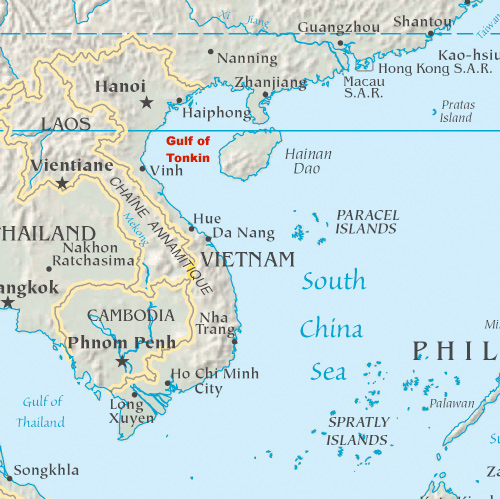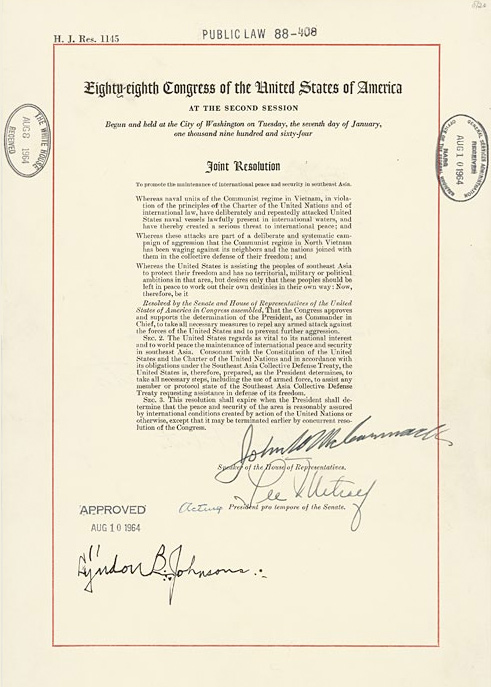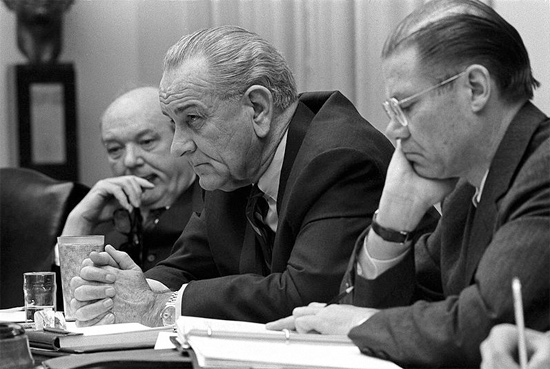
Source: Gulf of Tonkin location, DanMS, Wikimedia
Now you will see how this scale tipped in favor of the executive branch during the Vietnam War.
The Gulf of Tonkin
Events in the Gulf of Tonkin (see below) triggered U.S. involvement in the Vietnam War and set off an uneasy balance between the powers of the executive branch (President) and the legislative branch (Congress) during wartime. In July/August of 1964, U.S. destroyer ships were scouting the coastline of North Vietnam in the Gulf of Tonkin. According to reports, the ships were fired upon by North Vietnamese prompting, President Lyndon B. Johnson to order air strikes.

Source: Gulf of Tonkin location, DanMS, Wikimedia
Two days later, at the request of President Johnson, Congress passed a resolution called the Gulf of Tonkin Resolution that gave the President authority
"to take all necessary measures to repel any armed attack against the forces of the United States and to prevent further aggression."
--Gulf of Tonkin Resolution (1964)
In other words, the Gulf of Tonkin Resolution authorized the executive branch to use military force (for as long as needed) against an enemy without ever having to seek a formal declaration of war from Congress.
Below is the official copy of the Gulf of Tonkin Resolution:

Source: Tonkin Gulf Resolution, United States Congress, Wikimedia
President Lyndon B. Johnson cabinet meeting with Secretary of State Dean Rusk and Secretary of Defense Robert McNamara

Source:Dean Rusk, Lyndon B. Johnson and Robert McNamara in Cabinet Room meeting February 1968, Yoichi R. Okamoto, White House Press Office (WHPO), Wikimedia
Let's see what you have learned!
![]() Answer the questions below. (Scroll over to check your answers.)
Answer the questions below. (Scroll over to check your answers.)
![]() How did the Gulf of Tonkin Resolution tip the scale in favor of the executive branch?
How did the Gulf of Tonkin Resolution tip the scale in favor of the executive branch?